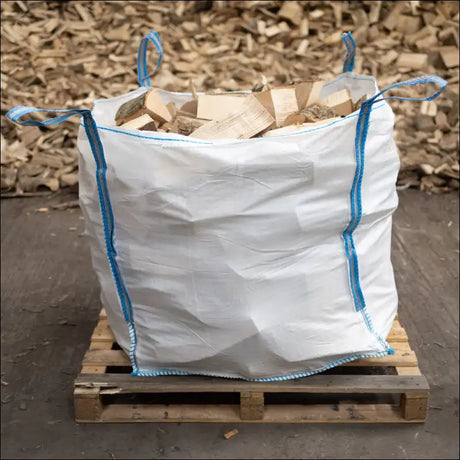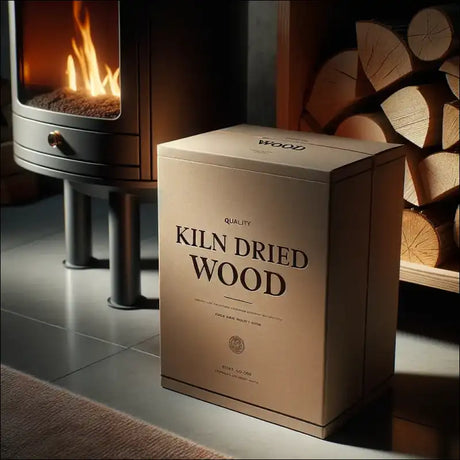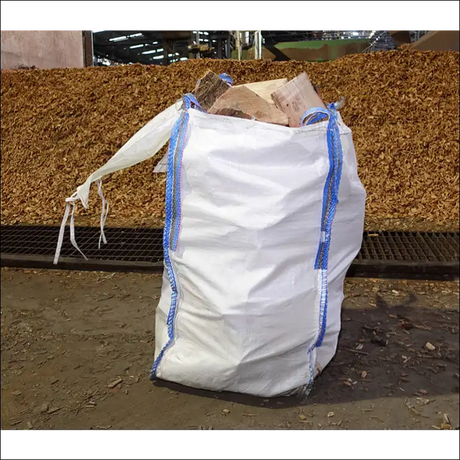After a long winter spent cozying up to a crackling fire, you're often left with a pile of ash in your fireplace or wood stove. While your first instinct may be to simply sweep it up and toss it out, wood ash actually has a variety of handy uses around the home and garden.
From natural fertilizer to makeshift cleaner, fireplace ash can be repurposed in clever ways. Here are 10 unique uses for wood stove and fireplace ash that you may not have considered:

1. Fertilize Your Garden
One of the best uses for wood ash is as an all-natural fertilizer and soil amendment. Ash contains high levels of potassium and calcium carbonate, two nutrients plants need to thrive.
To use it in your garden:
-
Allow the ash to completely cool and harden after removing from your stove or fireplace. Moist ash can damage plant roots and leaves.
-
Sprinkle lightly over vegetable gardens and flower beds. Ash increases soil pH, so avoid using on acid-loving plants like azaleas.
-
Till into the top few inches of soil or mix with compost. Ash encourages earthworms which aerate and enrich the soil.
-
Wood ash provides a quick boost of nutrients, so reapply every 2-3 weeks during the growing season.
This kiln dried wood can provide nutrient-rich ash for gardens when burned.
2. Make Natural Lye
Lye is an alkaline substance used to make soaps, detergents, and other cleaners. You can easily make lye at home by filtering water through your wood ash.
To make lye:
-
Place ash in a bucket, barrel, or other large container. Poke holes in the bottom.
-
Slowly pour water over the ash and collect the runoff liquid. A 5 gallon bucket of ash can produce 1-2 gallons of lye.
-
After straining through a coffee filter to remove impurities, test the lye water with a pH strip. Aim for a pH of 11-12.
-
Boil down excess liquid to concentrate your lye if needed.
Use lye to make old-fashioned lye soap or cleaning solutions. Exercise caution as lye can cause burns.
3. De-ice Walkways
Ash from your fireplace or kiln dried logs makes an effective and eco-friendly de-icer for slippery walkways and driveways.
To de-ice with ash:
-
Wait for ash to fully cool after removing from your stove or fireplace.
-
Sprinkle a thin layer over icy patches on sidewalks, steps, and driveways.
-
The ash melts the ice by lowering the freezing point of water. It provides traction similar to sand or kitty litter.
-
Reapply after the ash gets packed down or blown away.
Using ash is safer for concrete and vegetation than salt-based de-icers. It's readily available and budget-friendly too!
4. Boost Compost
Ash contains calcium, potassium, magnesium and trace minerals - all nutrients beneficial for compost piles.
To use ash in compost:
-
Mix approx. 1 cup of ash into each cubic foot of compost. It should not exceed 10% of the total volume.
-
Add in thin layers 2-3 inches below the surface. Don't concentrate in one spot.
-
Ash decreases acidity and makes nutrients more available to microorganisms and worms.
-
Helps compost piles retain the right amount of moisture.
Avoid using ash from charcoal briquettes or treated lumber, which may contain toxic chemicals. Ash from kiln dried ash or untreated firewood works great.
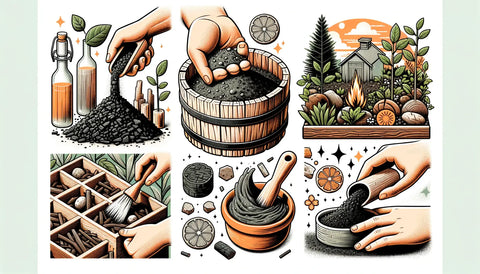
5. Make Soap
As mentioned before, you can make lye from wood ash. This homemade lye is the key ingredient for creating traditional lye soap.
To make ash soap:
-
Collect ash lye as directed above. Know your lye concentration before starting.
-
Melt fats such as lard, olive oil or coconut oil and allow to slightly cool.
-
Very slowly add the lye to the fats, stirring constantly. Trace will occur as it begins to thicken.
-
Add essential oils, herbs, colors etc. for scent and visual appeal.
-
Pour carefully into molds and allow to set 24-48 hours before unmolding.
-
Allow bars to cure for 2-4 weeks wrapped in wax paper before use.
It takes practice to master the art of soap making! Start with small 1-2 lb batches and learn as you go.
6. Clean and Polish Metal
Ash is mildly abrasive and alkaline, making it great for cleaning tarnished metal items around the house.
To clean with ash:
-
Apply a paste of ash and water with a soft cloth to metal surfaces. Use a mild touch to avoid scratching.
-
Rub gently in circular motions, rinsing often to remove tarnish and reveal the shine underneath.
-
Try on brass, copper, silver and rusted cast iron. This can bring new life to antique items.
You can also use ash as a metal polish by combining it with lemon juice or oil to form a thin paste. Rub onto metal and polish with a rag.
7. Make Natural Dyes
The minerals in fireplace ash produce vivid yellows, golds, browns, and blacks when used for dyeing wool and other natural fabrics.
To dye with ash:
-
Simmer clean wool or unprocessed fiber in a pot of ash lye for 30-60 minutes until the desired shade develops.
-
You can also make mordants from ash to bind and fix natural plant dyes. Simmer wool in the mordant before dyeing.
-
Strain and save your dye baths for reuse as the color concentrates. Rinse wool gently in cool water.
Experiment with layering colors and using plants from the garden to come up with beautiful custom shades.
8. Clean Laundry
In the pioneer days, ash lye was used to wash laundry by hand. You can still use this off-grid method if you want all-natural cleaners.
To do ash laundry:
-
Heat rainwater and add a few buckets of ash. Soak clothes overnight.
-
The next day, rub clothes vigorously on a washboard to remove stains.
-
Rinse thoroughly in clean water. Soak in vinegar water if discoloration occurs.
-
Hang clothes in sunlight to further whiten and disinfect them.
While more labor intensive than modern laundry detergents, this traditional approach has zero chemicals. It leaves clothes fresh using free materials.
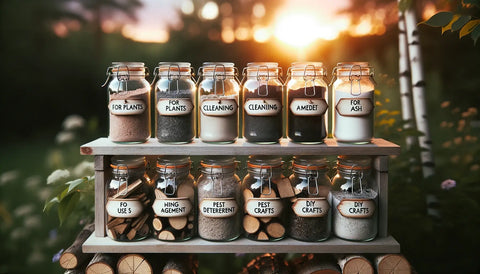
9. Remove Stains from Wood
The oxalic acid in ash helps remove stubborn stains and weathering from outdoor wood furniture and fixtures.
To remove stains:
-
Make a paste from ash and water. Apply to affected areas and let sit 5-10 minutes.
-
Scrub gently with a soft brush and rinse. Repeat if needed for tougher stains.
-
Works well on discoloration from mold, mildew, rust and scorch marks.
-
Follow up with a light sanding and application of new stain or wood finish.
Ash can restore gray, weathered wood back to its former glory affordably and naturally.
10. Exfoliate Skin
Looking for an eco-friendly alternative to plastic microbead scrubs? Reach for the ash bucket instead.
To make an exfoliating scrub:
-
Mix 1 part ash with 2 parts oil such as coconut, olive or almond. Add a few drops of essential oil if desired.
-
Massage in circular motions onto hands, feet, elbows, knees etc to remove dead skin and calluses.
-
Rinse clean. Moisturize after to avoid drying the skin.
The grainy yet soft texture of ash combined with moisturizing oils leaves skin feeling silky smooth. Make large batches to share amongst family and friends.
Conclusion
As you can see, wood ash has an astounding number of uses beyond simply taking up space. Experiment with these applications and discover even more ways to reduce and reuse this free byproduct from your fireplace or stove. With a little creativity, you may never take ash for granted again!
What unusual uses have you found for ash? Share your ideas and experiences in the comments below. And be sure to compost or responsibly discard any excess ash that can't be repurposed.


